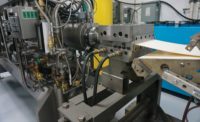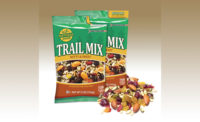It’s difficult to get products where they need to be when they need to be there. But a variety of fleet-management tools have evolved to streamline routes and make on-time delivery of baked goods and snack foods a reality.
Bakers and snack food producers deal with many challenges when it comes to delivering their products on time. Issues such as traffic delays, driver turnover and driver deviation can have a big impact on a delivery operation. The uncertainty of traffic congestion and the inability to predict traffic patterns when planning routes is a growing issue in many urban delivery environments.
Understandably, missing or late deliveries make for unhappy customers and have an impact on future orders. In short, in a competitive marketplace, suppliers need to make sure their products are in the store and on the shelf when consumers want them.
Luckily for bakers and snack food producers, new fleet-management tools are available to make on-time deliveries a reality. Telematics (GPS tracking), routing, navigation and other fleet-management solutions have evolved to new levels. Now, they enable companies to monitor driver behavior, cut delivery-related costs and better monitor delivery status of their products.
Simplifying a complex process
“Route optimization is a complex process, with many variables and constraints that need to be considered,” says William Salter, CEO and president of Paragon Software Systems Inc., Frisco, TX. “Using an automated route-optimization system can help streamline processes, produce realistic plans and ensure that costly transportation resources (and fuel) are used as efficiently as possible.
“More organizations are adopting telematics, routing, navigation and other fleet-management solutions—what we refer to as ‘location intelligence.’ Customers also are adopting more comprehensive mobile applications delivered on smartphones and tablet devices, which are designed to support productivity by digitizing and automating processes and reducing paperwork.”
Mobile applications that provide job and schedule information to mobile workers are big today, agrees Kelly Frey, Vice President, product marketing at Telogis Inc., Aliso Viejo, CA. “Managers can see what’s happening and adjust as necessary,” she explains. “Commercial-grade navigation, routing and territory planning integrated into the same platform with fleet management and telematics helps connect the dots between the back office and the field.”
Telematics hardware and software keep evolving, adds Brian Tabel, director of marketing, Isuzu Commercial Truck of America Inc., Anaheim, CA. “Isuzu provides a proprietary technology that utilizes a Data Recording Module (DRM) that has a reporting function with a comprehensive set of diesel truck operating data,” he says. “This data is provided in a printed report at each service interval.”
Linking route-optimization software and in-cab vehicle tracking is a big trend in fleet management, according to Salter. “The majority of our bakery and snack food customers are now using this,” he says, citing Paragon’s transport optimization system as an example. “Paragon’s transport optimization system holds details such as customer addresses, delivery quantities, time windows, vehicle sizes, driver-shift details and other transportation parameters. The software uses digital mapping to calculate the most effective delivery and collection sequences with accurate journey times, allocating loads to appropriate vehicles and drivers. This ensures that schedules are geographically feasible to meet promised arrival time windows, while improving fleet utilization and productivity.”
Grondorf sees a significant trend in embedding telematics and other fleet-management solutions at the factory level. Ford and General Motors (GM) in the light-duty truck category and Volvo, Mack and Hino Motors in the medium and heavy-duty category are installing next-generation telematics, navigation and compliance tools directly into their vehicles at the plant.
“This is lowering the cost of ownership and the complexity of telematics solutions as well as the adoption bar for fleets that may not have tried to integrate telematics into their fleets in the past,” Grondorf says. “It also eliminates the need to remove trucks from service for telematics installation. These solutions often can be rolled into the price of a new truck.”
Modifying driver behavior
The latest fleet-management systems offer tools that manage the behavior of drivers as well. RydeSmart from Ryder System Inc., Miami, helps manufacturers achieve better fuel economy by tracking driver behaviors that impact fuel efficiency, such as hard stops, idol times and safe driving techniques. “With RydeSmart, fleets are better positioned to monitor driver tendencies,” says Adriano Melluzzo, vice president national sales-East.
In addition to reporting the operating the status of all major drive-train and operating systems, Isuzu’s DRM reports driver-operating habits such as acceleration, braking and speed as well as fuel consumption and engine idle times. “Utilization of this data can improve driver behavior and safety, and reduces the cost of operation,” says Tabel.
On the dock end of operations, performance dashboards provide real-time visibility of the order fulfillment process, which allows course corrections before a missed shipment occurs, explains Marc Braun, president, PC Data USA, East Granby, CT. The company also makes software that ensures that the correct products are loaded onto the correct trucks.
“Automatic load manifests can be created to expedite the departure of trucks after they have been loaded, giving the driver maximum time to make his deliveries on-schedule,” he explains. “Finally, ‘proof of delivery’ hardware and software help drivers unload the right products at the right locations, giving bakers and snack food producers total reconciliation of production, shipment and delivery.”
Fuel prices and use
No question, the volatility and variability of gas prices today have made it challenging for bakers and snack food producers to maintain profit margins. Optimizing the shipment schedule around customer demands, geography, traffic patterns and production schedules can help ensure that gas is consumed more efficiently. Also, many truck fleets are transitioning from gasoline to diesel, which helps reduce vehicle breakdown rates.
To help overcome the issue of gas prices, fleets can focus on a number of strategies, notes Ryder’s Melluzzo. “One strategy is to make sure they are specifying fuel-efficient equipment, such as Environmental Protection Agency (EPA) SmartWay Certified equipment,” he explains. “Fleets also need to have a preventive maintenance program. Alternative fuel is another option. Natural gas is generally cheaper and more stable than diesel fuel, and can help fleets mitigate price volatility in their operations.”
The use of compressed natural gas (CNG) is also on the rise. According to the U.S. Department of Energy, natural gas powers 100,000 vehicles in the U.S. and 11.2 million vehicles worldwide. It’s the fastest growing source of fuel in the transportation and trucking sector. The advantages of natural gas include domestic availability, widespread distribution infrastructure, clean-burning qualities and a lower cost than gasoline and diesel fuel. Reflecting this trend, Isuzu offers trucks with two diesel engines that are bio-diesel-capable and a gasoline engine that is capable of CNG and liquefied petroleum gas (LPG) operation.
Delco Foods and U.S. Oil, Appleton, WI, are building a new GAIN Clean Fuel CNG station located near Delco’s distribution center in Indianapolis. Scheduled for completion in November, the station will supply Delco as it converts its fleet to this more environmentally friendly fuel alternative. The station will be available for use by other carriers and the general public.
“The average Class 8 truck that is converted from diesel to CNG will eliminate 60 metric tons of CO2 emitted into the atmosphere every year,” says Bill Renz, general manager for GAIN Clean Fuels. “Our plan is to have more than 100 of these stations operating within the next three years.”








